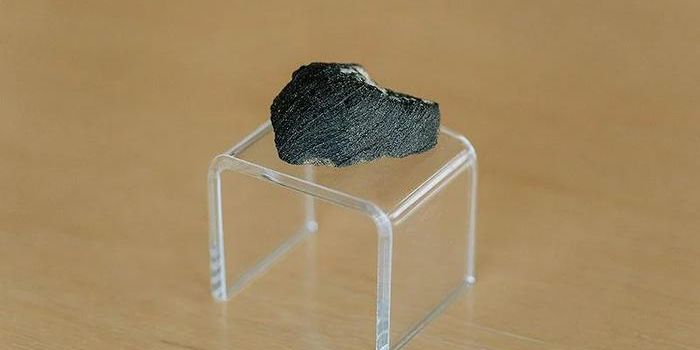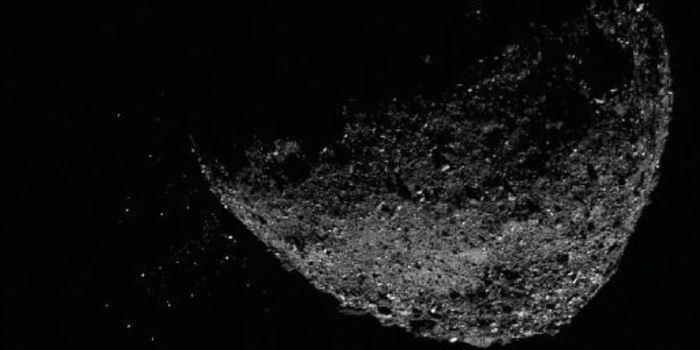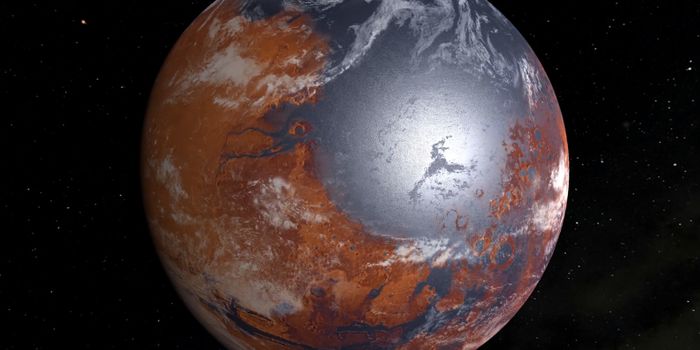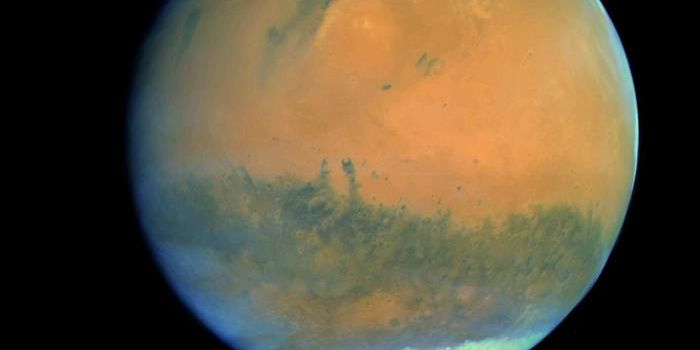Scientists Watch the 'Spaghettification' of a Star
In work that could help scientists understand how matter behaves when it's close to supermassive black holes, a star has been observed while getting sucked into one in what's known as a tidal disruption event. The star is ripped to shreds by the force of the black hole's gravity in a phenomenon called spaghettification. Pieces of the star drop into the black hole, emitting bursts of light. At a distance of about 215 million light-years from our planet, this is the closest tidal disruption event that has ever been recorded.
Astronomers usually have a hard time observing tidal disruption events because they tend to be obscured by dust and debris. In this case, scientists detected the event very shortly after the star was torn apart. Then they used the Very Large Telescope and New Technology Telescope of the European Southern Observatory (ESO), the Las Cumbres Observatory global telescope network, and the Neil Gehrel Swift Satellite to monitor the event, named AT2019qiz, over six months as it became brighter and then faded out. The findings have been reported in the Monthly Notices of the Royal Astronomical Society.
"The idea of a black hole sucking in a nearby star sounds like science fiction. But this is exactly what happens in a tidal disruption event," said the lead study author Dr. Matt Nicholl, a Royal Astronomical Society research fellow at the University of Birmingham. "We were able to investigate in detail what happens when a star is eaten by such a monster."
"When a black hole devours a star, it can launch a powerful blast of material outwards that obstructs our view," added Samantha Oates of the University of Birmingham. "This happens because the energy released as the black hole eats up stellar material propels the star's debris outwards."
"Several sky surveys discovered emission from the new tidal disruption event very quickly after the star was ripped apart," said Thomas Wevers, an ESO Fellow in Santiago, Chile, who conducted his part of the work at the Institute of Astronomy, University of Cambridge. "We immediately pointed a suite of ground-based and space telescopes in that direction to see how the light was produced."
For the first time, researchers were able to make a direct link between the material coming from the star and the light being emitted because they detected the event rapidly.
"The observations showed that the star had roughly the same mass as our own Sun, and that it lost about half of that to the black hole, which is over a million times more massive," said Nicholl.
"Because we caught it early, we could actually see the curtain of dust and debris being drawn up as the black hole launched a powerful outflow of material with velocities up to 10,000 kilometers per second," said Kate Alexander, NASA Einstein Fellow at Northwestern University. "This unique 'peek behind the curtain' provided the first opportunity to pinpoint the origin of the obscuring material and follow in real-time how it engulfs the black hole."
Sources: AAAS/Eurekalert! via University of Birmingham, Monthly Notices of the Royal Astronomical Society









